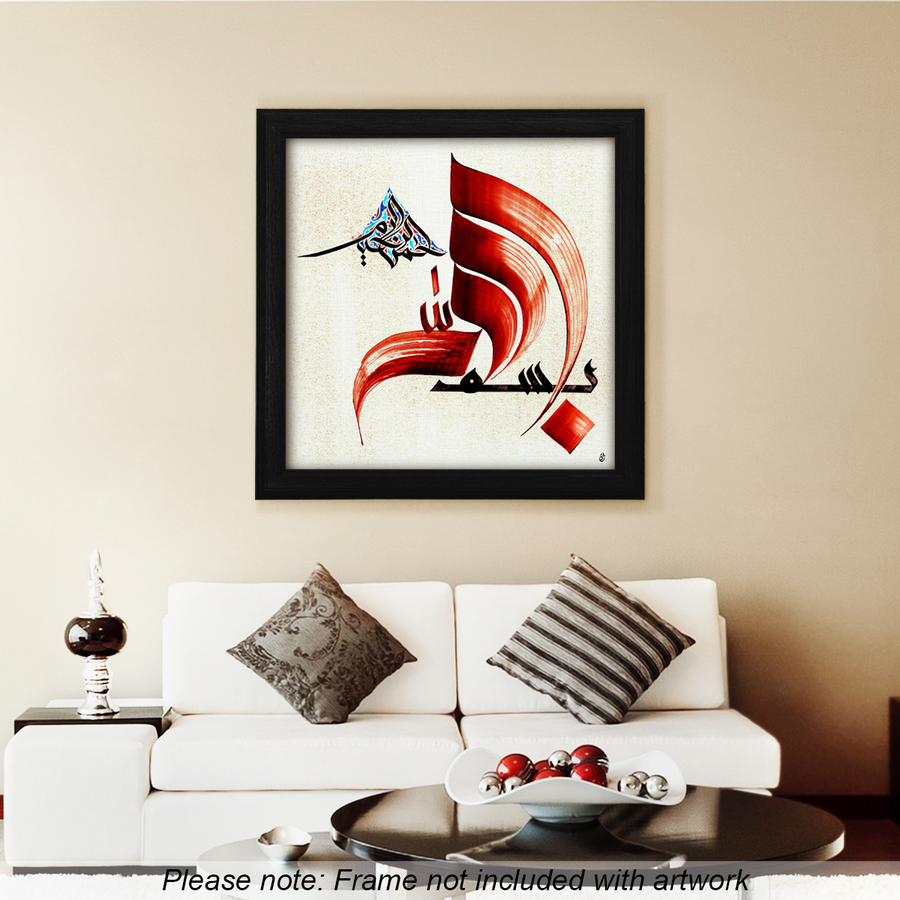
Modern Islamic art is one of the latest trends in interior decoration. From wall decals and metal frames to colourful digital printsand stencil works, Islamic art for homeis seeing an upward trend in the online marketplace.
Islamic calligraphy is the dominating feature of modern Islamic art. A medieval art form that took shape in the 7th century, shortly after the Prophet’s death, Islamic calligraphy emerged from the need to transcribe the Quran in the form of a book. It also developed as an art form on account of Islam’s prohibition of animal or human imagery, leading artists to findexpression in writing Quranic verses in varied artistic styles.
Islamic calligraphy thrived during Muslim rule in various parts of the world – from adorning monuments like the Blue Mosque in Turkey or the Taj Mahal in India to enhancing the artistic value of ceramic pottery, marble work and silk carpets as well as being used to write court papers.
Over the aeons, there has been a steady decline in the scale and grandeur of Islamic calligraphy on account of varied factors — from the defeat of Muslim empires at the hand of European colonists to a general apathy towards the medieval art form.
However, at a more mass and humble level, Islamic art for home thrived as people decorated their homes with traditional wall carpets which had Quranic verses stitched on them.
Cut to the Internet age, and its varied consequences – social media and e-commerce – alongwithglobalisation-led rising incomes, Islamic calligraphy is being made in a new form. A new market is being explored –that for modern Islamic art.
Modern Islamic art, as the name implies,blends modern materials and technology with traditional Islamic calligraphy. For example, economical wall decals use vinyl stickers on which Islamic calligraphy is copied from a digital image. These are quite large and can be stuck directly on to the wall. There are also digital prints of Islamic paintings. These prints are generally on high-quality canvas or matte paper. They make for colourful Islamic art that can liven up your walls. Then there are large stainless steel frames cut to the shape of the text.
Modern Islamic art pieces also includeEnglish translations of Arabic verses. Sometimes, only the English translation is there. This is an interesting and significant new trend reflective of the fact that 80 per cent of Muslims are non-Arabs.
Modern Islamic art uses a large variety of colours other than just the black and golden of traditional Islamic art. It uses a new range of materialssuch as vinyl stickers, canvas, fine art paper and even leather, thereby going beyond just wall carpets or black fabrics.
It is quiteobvious from the above facts that in terms of materials, language, sizes and production technologies, modern Islamic art is a significant, interesting trend to watch out for in the field of Islamic art for home, an important category in interior decoration, one that transcends many boundaries and is therefore very visible on global selling platforms like Amazon, Ebay, Alibaba and Etsy.






